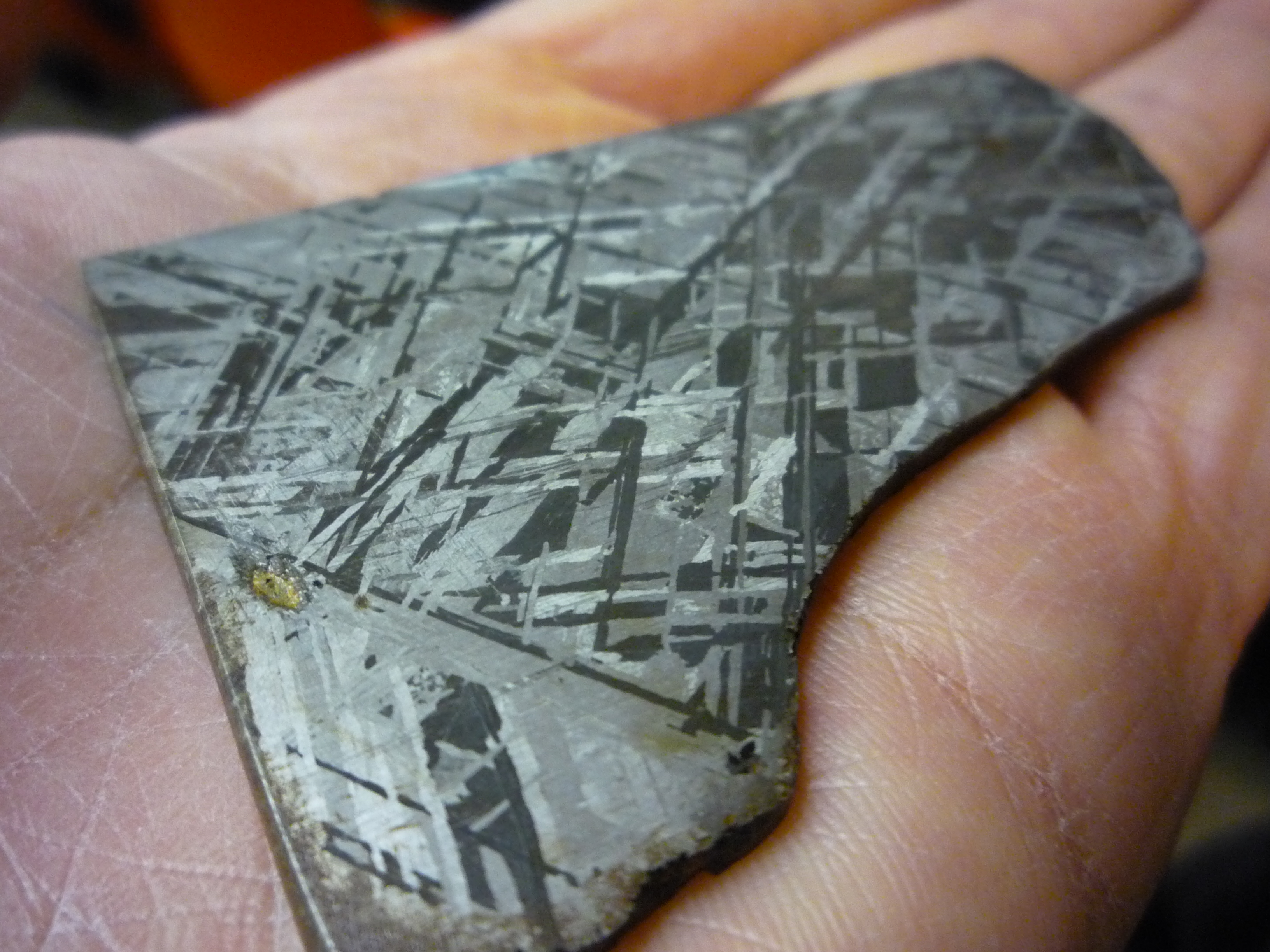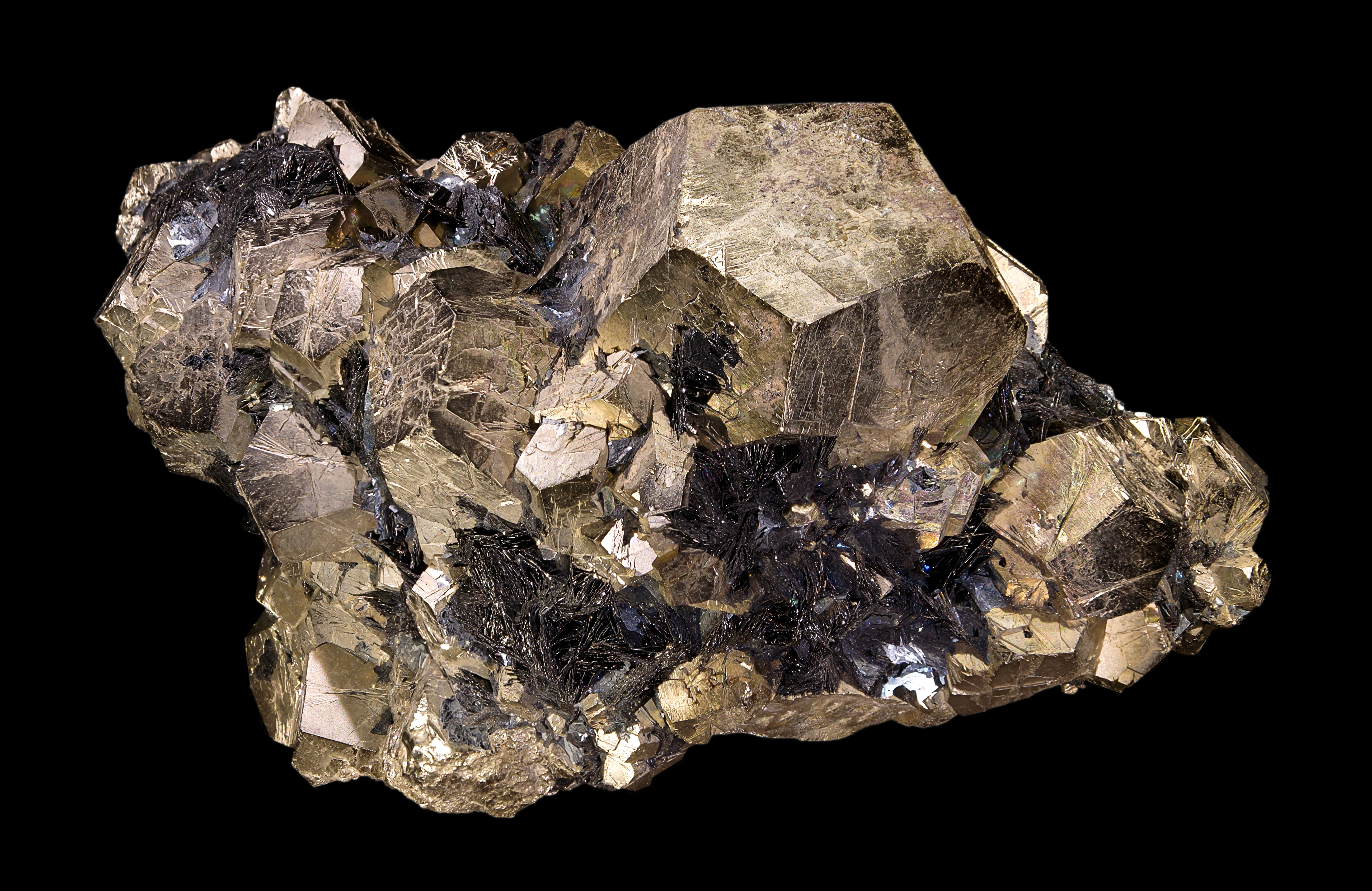|
Millerite
Millerite or ''nickel blende'' is a nickel sulfide mineral, Ni S. It is brassy in colour and has an acicular habit, often forming radiating masses and furry aggregates. It can be distinguished from pentlandite by crystal habit, its duller colour, and general lack of association with pyrite or pyrrhotite. Paragenesis Millerite is a common metamorphic mineral replacing pentlandite within serpentinite ultramafics. It is formed in this way by removal of sulfur from pentlandite or other nickeliferous sulfide minerals during metamorphism or metasomatism. Millerite is also formed from sulfur poor olivine cumulates by nucleation. Millerite is thought to form from sulfur and nickel which exist in pristine olivine in trace amounts, and which are driven out of the olivine during metamorphic processes. Magmatic olivine generally has up to ~4000 ppm Ni and up to 2500 ppm S within the crystal lattice, as contaminants and substituting for other transition metals with simi ... [...More Info...] [...Related Items...] OR: [Wikipedia] [Google] [Baidu] |
Heazlewoodite
Heazlewoodite, Ni3S2, is a rare sulfur-poor nickel sulfide mineral found in serpentinitized dunite. It occurs as disseminations and masses of opaque, metallic light bronze to brassy yellow grains which crystallize in the trigonal crystal system. It has a hardness of 4, a specific gravity of 5.82. Heazlewoodite was first described in 1896 from Heazlewood, Tasmania, Australia. Paragenesis Heazlewoodite is formed within terrestrial rocks by metamorphism of peridotite and dunite via a process of nucleation. Heazlewoodite is the least sulfur saturated of nickel sulfide minerals and is only formed via metamorphic exsolution of sulfur from the lattice of metamorphic olivine. Heazlewoodite is thought to form from sulfur and nickel which exist in pristine olivine in trace amounts, and which are driven out of the olivine during metamorphic processes. Magmatic olivine generally has up to ~4000 ppm Ni and up to 2500 ppm S within the crystal lattice, as contaminants and substituti ... [...More Info...] [...Related Items...] OR: [Wikipedia] [Google] [Baidu] |
Pentlandite
Pentlandite is an iron–nickel sulfide with the chemical formula . Pentlandite has a narrow variation range in nickel to iron ratios (Ni:Fe), but it is usually described as 1:1. In some cases, this ratio is skewed by the presence of pyrrhotite Inclusion (mineral), inclusions. It also contains minor cobalt, usually at low levels as a fraction of weight. Pentlandite forms Cubic (crystal system), isometric crystals, but it is normally found in massive granular Aggregate (geology), aggregates. It is brittle with a Mohs scale of mineral hardness, hardness of 3.5–4 and specific gravity of 4.6–5.0 and is non-magnetic. It has a yellowish bronze color and a metallic Lustre (mineralogy), luster. Pentlandite is found in abundance within Ultramafic rock, ultramafic rocks, making it one of the most important sources of mined nickel. It also occasionally occurs within mantle xenoliths and "black smoker" hydrothermal vents. Etymology It is named after Republic of Ireland, Irish scientist ... [...More Info...] [...Related Items...] OR: [Wikipedia] [Google] [Baidu] |
Acicular (crystal Habit)
__NOTOC__ Acicular, in mineralogy, refers to a crystal habit composed of slender, needle-like crystals. Crystals with this habit tend to be fragile. Complete, undamaged acicular specimens are uncommon. The term "acicular" derives from the Late Latin "acicula" meaning "little needle". Strictly speaking, the word refers to a growth habit that is slender and tapering to a point. Prismatic crystals are not acicular; however, colloquial usage has altered the commonly understood meaning of the word. When writing for mineralogical publications, authors should restrict their usage of "acicular" to crystals with the tapering growth habit. To add to the confusion, some minerals are described with various morphological terms. For example, natrolite is often described as slender prismatic and millerite is often described as filiform or capillary. Examples Minerals with an acicular habit include mesolite, natrolite, malachite, gypsum, rutile, brochantite and bultfonteinite. Crystals o ... [...More Info...] [...Related Items...] OR: [Wikipedia] [Google] [Baidu] |
Nickel
Nickel is a chemical element; it has symbol Ni and atomic number 28. It is a silvery-white lustrous metal with a slight golden tinge. Nickel is a hard and ductile transition metal. Pure nickel is chemically reactive, but large pieces are slow to react with air under standard conditions because a passivation layer of nickel oxide forms on the surface that prevents further corrosion. Even so, pure native nickel is found in Earth's crust only in tiny amounts, usually in ultramafic rocks, and in the interiors of larger nickel–iron meteorites that were not exposed to oxygen when outside Earth's atmosphere. Meteoric nickel is found in combination with iron, a reflection of the origin of those elements as major end products of supernova nucleosynthesis. An iron–nickel mixture is thought to compose Earth's outer and inner cores. Use of nickel (as natural meteoric nickel–iron alloy) has been traced as far back as 3500 BCE. Nickel was first isolated and classifie ... [...More Info...] [...Related Items...] OR: [Wikipedia] [Google] [Baidu] |
New Caledonia
New Caledonia ( ; ) is a group of islands in the southwest Pacific Ocean, southwest of Vanuatu and east of Australia. Located from Metropolitan France, it forms a Overseas France#Sui generis collectivity, ''sui generis'' collectivity of the French Republic, a legal status unique in overseas France, and is enshrined in a dedicated chapter of the French Constitution. The archipelago, part of the Melanesia subregion, includes the main island of Grande Terre (New Caledonia), Grande Terre, the Loyalty Islands, the Chesterfield Islands, the Belep archipelago, the Isle of Pines (New Caledonia), Isle of Pines, and a few remote islets. The Chesterfield Islands are in the Coral Sea. French people, especially locals, call Grande Terre , a nickname also used more generally for the entire New Caledonia. Kanak people#Agitation for independence, Pro-independence Kanak parties use the name (''pron.'' ) to refer to New Caledonia, a term coined in the 1980s from the ethnic name of the indi ... [...More Info...] [...Related Items...] OR: [Wikipedia] [Google] [Baidu] |
Talc Carbonate
Talc carbonates are a suite of rock and mineral compositions found in metamorphosed ultramafic rocks. The term refers to the two most common end-member minerals found within ultramafic rocks which have undergone talc-carbonation or carbonation reactions: talc and the carbonate mineral magnesite. Talc carbonate mineral assemblages are controlled by temperature and pressure of metamorphism and the partial pressure of carbon dioxide within metamorphic fluids, as well as by the composition of the host rock. Compositional controls In a general sense, talc carbonate metamorphic assemblages are diagnostic of the magnesium content of the ultramafic protolith. * Lower-magnesian ultramafic rocks (12-18% MgO as a rule of thumb) tend to favor talc-chlorite assemblages * Medium-MgO rocks (15-25% MgO) tend to produce talc-amphibole assemblages. * High-MgO rocks with in excess of 25% MgO tend to form true talc-magnesite metamorphic assemblages. Thus, the MgO content of a metamorphosed ultram ... [...More Info...] [...Related Items...] OR: [Wikipedia] [Google] [Baidu] |
Fugacity
In thermodynamics, the fugacity of a real gas is an effective partial pressure which replaces the mechanical partial pressure in an accurate computation of chemical equilibrium. It is equal to the pressure of an ideal gas which has the same temperature and molar Gibbs free energy as the real gas. Fugacities are determined experimentally or estimated from various models such as a Van der Waals gas that are closer to reality than an ideal gas. The real gas pressure and fugacity are related through the dimensionless fugacity coefficient \varphi = \frac. For an ideal gas, fugacity and pressure are equal, and so . Taken at the same temperature and pressure, the difference between the molar Gibbs free energies of a real gas and the corresponding ideal gas is equal to . The fugacity is closely related to the thermodynamic activity. For a gas, the activity is simply the fugacity divided by a reference pressure to give a dimensionless quantity. This reference pressure is called the ... [...More Info...] [...Related Items...] OR: [Wikipedia] [Google] [Baidu] |
Laterite
Laterite is a soil type rich in iron and aluminium and is commonly considered to have formed in hot and wet tropical areas. Nearly all laterites are of rusty-red coloration, because of high iron oxide content. They develop by intensive and prolonged weathering of the underlying parent rock, usually when there are conditions of high temperatures and heavy rainfall with alternate wet and dry periods. The process of formation is called laterization. Tropical weathering is a prolonged process of chemical weathering which produces a wide variety in the thickness, grade, chemistry and ore mineralogy of the resulting soils. The majority of the land area containing laterites is between the tropics of Cancer and Capricorn. Laterite has commonly been referred to as a soil type as well as being a rock type. This, and further variation in the modes of conceptualizing about laterite (e.g. also as a complete weathering profile or theory about weathering), has led to calls for the term to be ... [...More Info...] [...Related Items...] OR: [Wikipedia] [Google] [Baidu] |
Sulfide Mineral
The sulfide minerals are a class of minerals containing sulfide (S2−) or disulfide () as the major anion. Some sulfide minerals are economically important as metal ores. The sulfide class also includes the selenide mineral, selenides, the telluride mineral, tellurides, the arsenide mineral, arsenides, the antimonide mineral, antimonides, the bismuthinides, the sulfarsenides and the sulfosalts.http://www.minerals.net/mineral/sort-met.hod/group/sulfgrp.htm Minerals.net Dana Classification, SulfidesKlein, Cornelis and Cornelius S. Hurlbut, Jr., 1986, ''Manual of Mineralogy'', Wiley, 20th ed., pp 269-293 Sulfide minerals are inorganic compounds. Minerals Common or important examples include: * Acanthite *Chalcocite *Bornite *Galena *Sphalerite *Chalcopyrite *Pyrrhotite *Millerite *Pentlandite *Covellite *Cinnabar *Realgar *Orpiment *Stibnite *Pyrite *Marcasite *Molybdenite Sulfarsenides: *Cobaltite *Arsenopyrite *Gersdorffite Sulfosalts: *Pyrargyrite *Pro ... [...More Info...] [...Related Items...] OR: [Wikipedia] [Google] [Baidu] |
Crystal Lattice
In crystallography, crystal structure is a description of ordered arrangement of atoms, ions, or molecules in a crystal, crystalline material. Ordered structures occur from intrinsic nature of constituent particles to form symmetric patterns that repeat along the principal directions of Three-dimensional space (mathematics), three-dimensional space in matter. The smallest group of particles in a material that constitutes this repeating pattern is the unit cell of the structure. The unit cell completely reflects the symmetry and structure of the entire crystal, which is built up by repetitive Translation (geometry), translation of the unit cell along its principal axes. The translation vectors define the nodes of the Bravais lattice. The lengths of principal axes/edges, of the unit cell and angles between them are lattice constants, also called ''lattice parameters'' or ''cell parameters''. The symmetry properties of a crystal are described by the concept of space groups. All possi ... [...More Info...] [...Related Items...] OR: [Wikipedia] [Google] [Baidu] |





